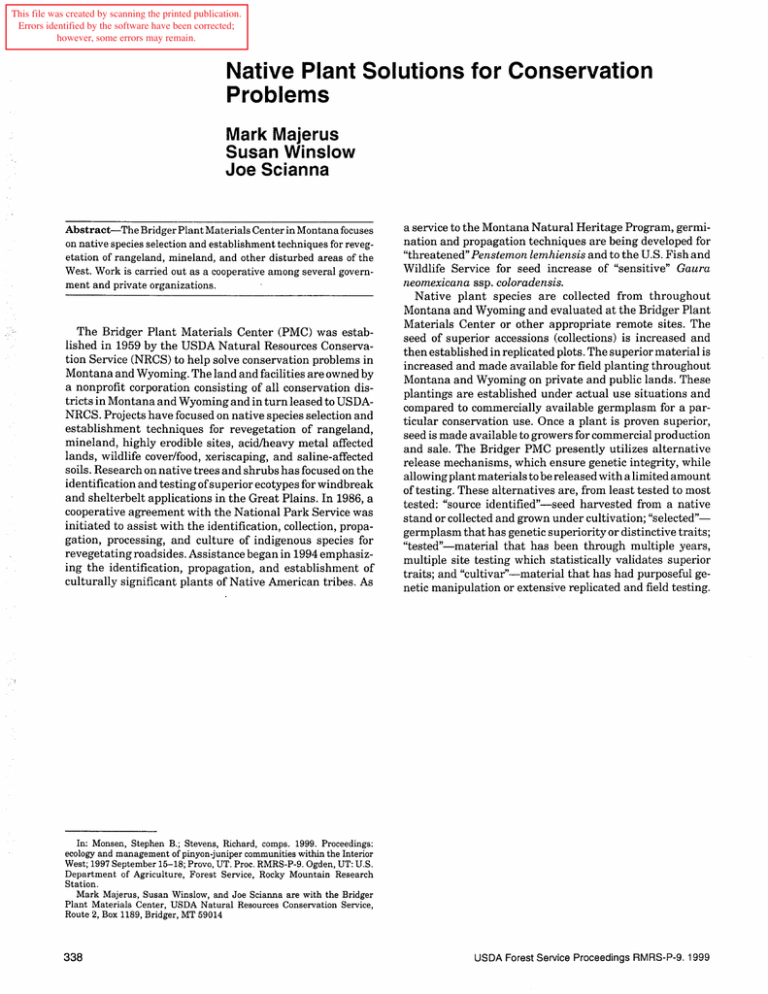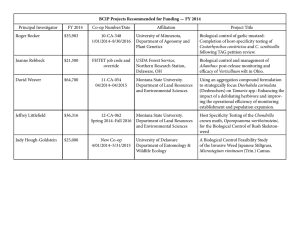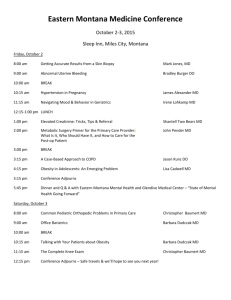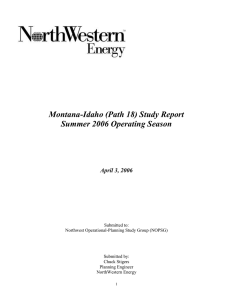Document 11871964
advertisement

This file was created by scanning the printed publication. Errors identified by the software have been corrected; however, some errors may remain. Native Plant Solutions for Conservation Problems Mark Majerus Susan Winslow Joe Scianna Abstract-The Bridger Plant Materials Center in Montana focuses on native species selection and establishment techniques for revegetation of rangeland, mineland, and other disturbed areas of the West. Work is carried out as a cooperative among several government and private organizations. The Bridger Plant Materials Center (PMC) was established in 1959 by the USDA Natural Resources Conservation Service (NRCS) to help solve conservation problems in Montana and Wyoming. The land and facilities are owned by a nonprofit corporation consisting of all conservation districts in Montana and Wyoming and in turn leased to USDANRCS. Projects have focused on native species selection and establishment techniques for revegetation of rangeland, mineland, highly erodible sites, acid/heavy metal affected lands, wildlife cover/food, xeriscaping, and saline-affected soils. Research on native trees and shrubs has focused on the identification and testing of su perior ecotypes for windbreak and shelterbelt applications in the Great Plains. In 1986, a cooperative agreement with the National Park Service was initiated to assist with the identification, collection, propagation, processing, and culture of indigenous species for revegetating roadsides. Assistance began in 1994 emphasizing the identification, propagation, and establishment of culturally significant plants of Native American tribes. As a service to the Montana Natural Heritage Program, germination and propagation techniques are being developed for "threatened" Penstemon lemhiensis and to the U.S. Fish and Wildlife Service for seed increase of "sensitive" Gaura neomexicana ssp. coloradensis. Native plant species are collected from throughout Montana and Wyoming and evaluated at the Bridger Plant Materials Center or other appropriate remote sites. The seed of superior accessions (collections) is increased and then established in replicated plots. The su perior material is increased and made available for field planting throughout Montana and Wyoming on private and public lands. These plantings are established under actual use situations and compared to commercially available germplasm for a particular conservation use. Once a plant is proven superior, seed is made available to growers for commercial prod uction and sale. The Bridger PMC presently utilizes alternative release mechanisms, which ensure genetic integrity, while allowing plant materials to be released with a limited amount of testing. These alternatives are, from least tested to most tested: "source identified"-seed harvested from a native stand or collected and grown under cultivation; "selected"germplasm that has genetic superiority or distinctive traits; "tested"-material that has been through multiple years, multiple site testing which statistically validates superior traits' and "cultivar"-material that has had purposeful genetic ~anipulation or extensive replicated and field testing. In: Monsen, Stephen B.; Stevens, Richard, comps. 1999. Proceedin~s: ecology and management of pinyon-juniper communities within the InterlOr West; 1997 September 15-18; Provo, UT. Proc. RMRS-P-9. Ogden, UT: U.S. Department of Agriculture, Forest Service, Rocky Mountain Research Station. Mark Majerus, Susan Winslow, and Joe Scianna are with ~he Brid~er Plant Materials Center, USDA Natural Resources ConservatlOn Servlce, Route 2, Box 1189, Bridger, MT 59014 338 USDA Forest Service Proceedings RMRS-P-9. 1999






